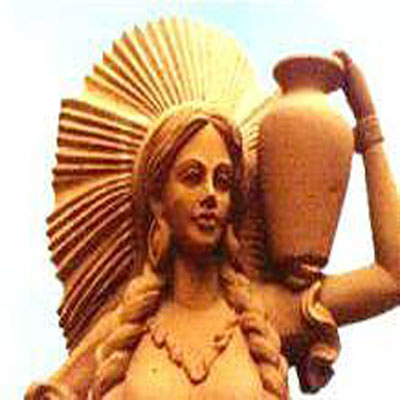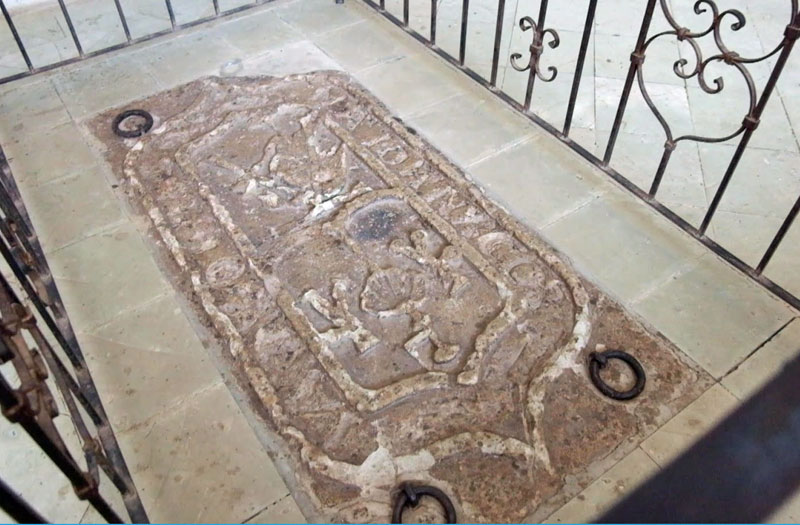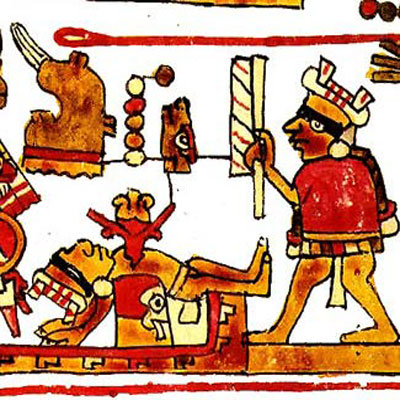
The executioner lifts the macuahuitl and points it toward the sky. Donaji lays on the stone altar, her neck extended, slightly bent, fully exposed to the powerful thrust she knows is to come. She is a Zapotec Princess, the last. She will give her life for her people as was prophesized when she was born.

Ceremonial Macuahuitl
The Mixtec prince, Nucano, the Lord of Tilantongo, Donaji’s lover, stands a few steps away. He appears to be in stoic detachment, but inside his head, thoughts of love and rage, gratitude and guilt battle the anger and sadness that he hides along with his tears. What must be done must be done.
The powerful sword severs her head in a single blow. Blood surges from the open wound forming a pool on the altar. Two warriors steady the body, still jerking and shaking. They place it into a sack woven from sturdy materials dyed in the royal colors. They leave quickly to bury the body along the Atoyac River. Nucano steps forward and gently lifts Donaji’s head, the eyes still open looking deeply into his own eyes. He shudders, terrified, shamed, but Donaji’s eyes send him a message of calm understanding before they close forever. He gently places her head into a sack made of the same royal designs. He leaves alone to bury it in a secret place.
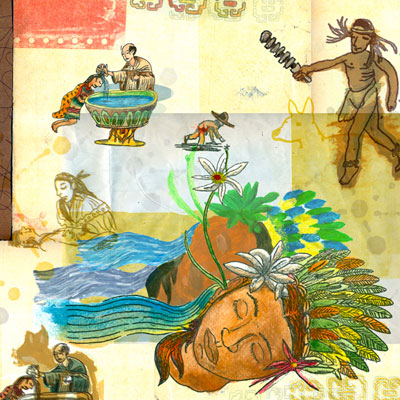
The Legend of Donaji
The wind comes out of the sky. The long leaves of the palms rattle incessantly. The rain God Cocijo sends down heavy tears of sorrow for three long days. At the first sight of the sun, Nucano plunges a knife into his heart. He joins his lover without telling anyone where he buried her head.
A fiction? Yes. But, it’s based on a legend about the Princess Donaji, who, from all accounts, was a real person. We may never know the facts of Donaji’s life or the truth of the legend that grew after her death but her story is simply too real not to be trusted in some form. The legend makes for a good story and who doesn’t like a good story?
The story varies depending on who tells it. This account is pieced together from various sources.
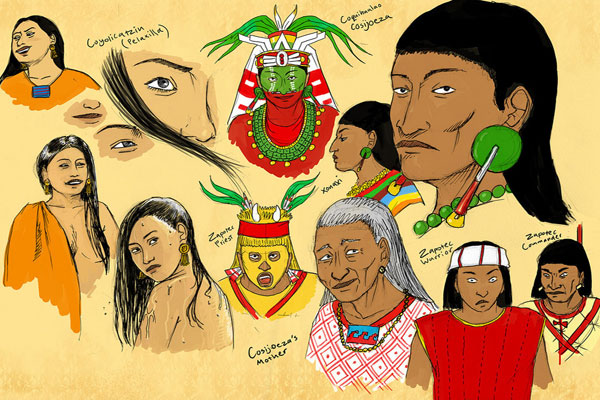
Around the year 1490, King Cosijoeza of the Zapotecs married Coyollicatizin, the daughter of the Emperor Moctezuma II of the Aztecs. They had five children. The youngest, a girl. The King summoned a priest from Mitla, the religious center of the Zapotec world, to provide a prophecy of his daughter’s future. He was told that his daughter’s life would be filled with tragic events and that she would in the end sacrifice her life for her people. King Cosijoeza was sad but also proud that his daughter was to lead a selfless life for her people. He named her Donaji (Great Soul) pronounced in the soft Zapotec language as Donashi.
The Mixtecs, lead by their King Dzahuindanda, had been enemies of the Zapotecs for centuries. They took over the great religious ceremonial center at Monte Albán after the Zapotecs left and began reusing the Zapotec tombs to bury their own elite. The Zapotecs wanted to retake Monte Albán and this led to several wars between the two groups.
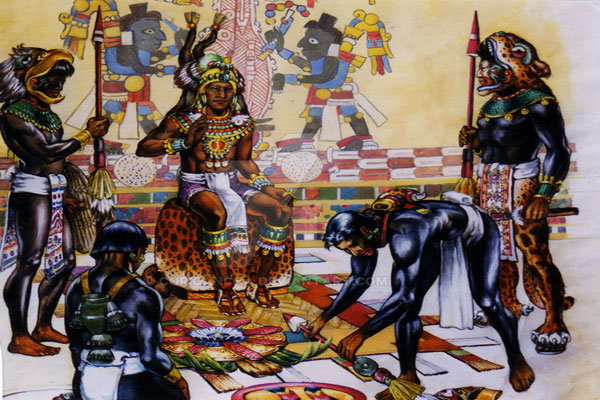
Mixtec King and court
When Donaji grew up, her people, the Zapotecs, were involved in one of their many wars with the Mixtecs. One day, Zapotec warriors brought a prisoner, a Mixtec prince named Nucano, to Mitla. Taking pity on him, she took care of his wounds. They fell in love. When he healed, he asked her to let him go, which she did.
The wars continued and the Zapotecs were forced to abandon their capital at Zaachila. King Cosijoeza ruled the Zapotec Isthmus domains from his capital at present-day Tehuantepec.
After the Spanish Conquest, the evangelization of the country began. Donají asked for baptism and was renamed Doña Juana de Cortés.
In 1520, with the Aztec threat diminished by the Spanish invasion, Cosijoeza recklessly attacked the fierce Mixtecs, losing the initial battle and then nearly his life as the Mixtecs pressed their advantages.
However, the Spanish, in the person of Hernán Cortés’s lieuitenant, Francisco Orozco negotiated a Mixtec-Zapotec treaty in which King Dzahuindanda received Princess Donaji as a hostage to guarantee the peace. The Zapotecs were uncomfortable giving up their princess, but they were assured she would be treated as a royal in all respects. She left happily because of her love for Nucano.
Having Donaji as a prisoner at Monte Alban (known as Danni Dipaa in those days) was not exactly an advantage to Dzahuindanda, for he suspected that she was as much a spy as a hostage. His guess was right. Donaji gleaned intelligence vital to the Zapotec counterattack her father Cosijoeza was planning At the moment of Dzahuindanda’s forces were most vulnerable, she sent her father a secret essage to attack which he did, with complete success, except for one thing.
With the treaty broken, the outraged Mixtecs decided to execute Donaji. They decapitated her and buried her body before her father could rescue her.
The legend says that a young shepherd who took animals to pasture near San Agustin de las Juntas found a Madonna lily flower, also called Lirio. Instead of cutting it off, he dug into the soil to take it complete with the roots. When he was digging, he saw a human ear, in fact the root was growing from the ear. Then he discovered a human head. The head was in perfect condition and because of the rich decorations, it was thought to be the head of the princess. The body and the head of Princess Donaji were buried in the temple of Cuilapam. It is believed that this was done to attract more indigenous people to the Dominican monastery.
After the military conquest of Mexico came to an end, the spiritual conquest began. During the 1520s and 1530s, the Dominicans established missions south of Mexico City. The beautiful Ex-Convent (Monastery) of Saint James (Santiago) Apostle was a later mission with construction starting in 1555. Construction continued until through the 1570s but was eventually stopped as the local Indian population declined and the center of the Spanish occupation shifted to the city of Oaxaca, originally known as Antequera.
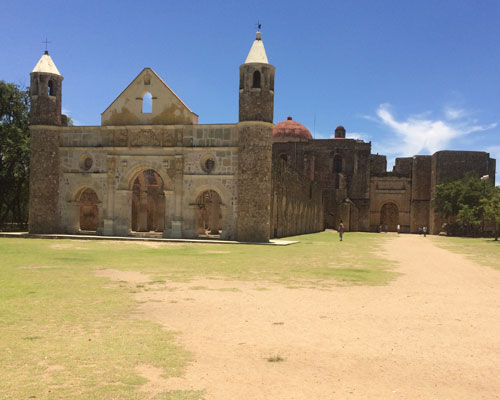
Ex-Convent of Saint James Apostle
The Ex-Convent of Saint James Apostle, while unfinished and damaged over the years by earthquakes and neglect, remains a gorgeous and popular site. Every year on July 25, there is a fiesta of Santiago (St. James) with plumed dancers in the monastery atrium performing the Dance of the Conquest, a dance-drama from the 16th Century that reenacts Hernán Cortés defeat of the Aztecs.
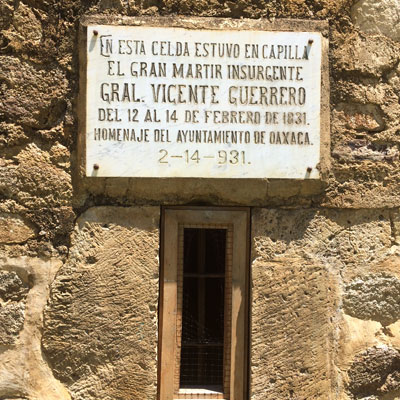
Plaque designating where Vicente Guerrero was executed
Mexican history was made at the Ex-Convent in 1831. Vicente Guerrero, the second president of Mexico and one of the heroes of the Mexican War of Independence, was killed by a firing squad on February 14th, 1831. He had been betrayed in Acapulco by the conservative powers who wanted him ousted. His execution was a shock to the nation, some say an outright murder and perhaps a warning to men considered socially and ethnically inferior not to dare to dream of being President. Guerrero was of afro-mestizo descent, championed the cause of Mexico’s common people, and abolished slavery during his short term as President.

Interior Garden
The Ex-Convent is today a tranquil place where footsteps echoed in the halls and chambers but, it is also easy to imagine the place in full movement of Dominican Monks walking through the halls, praying, preaching, studying or just doing their chores at any given day.
Many of the rooms (especially the monk’s quarters upstairs) are used for archaeological research.

Research Room
A plaque located on the wall outside the church has a mixture of Mixtec signs and the year 1555 written in Arabic script.
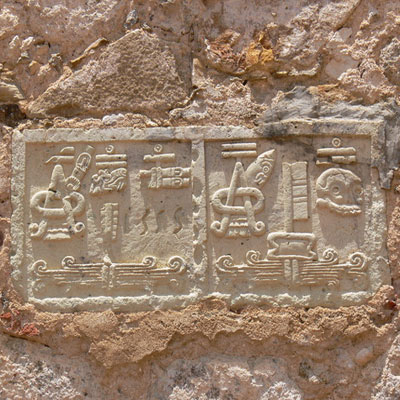
Date of Construction
At the front of the monastery is an open air church. Many of the original columns have been destroyed but the basic structure remains. Inside the open air church there is a pulpit from which the priests conducted mass and a holy water font near the front exit.
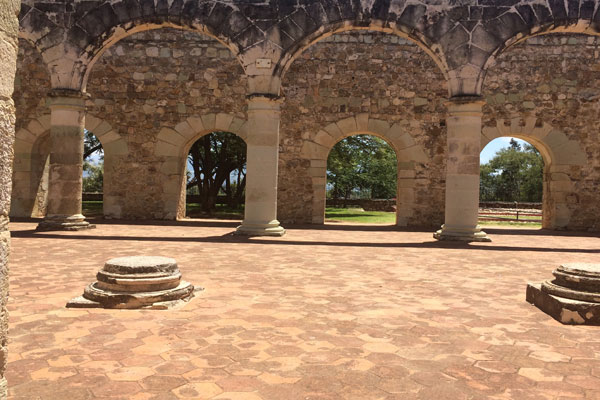
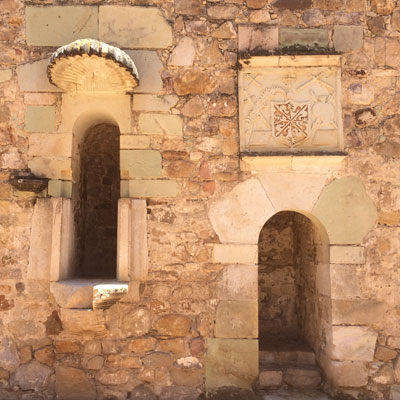
Pulpit for Open Air Church
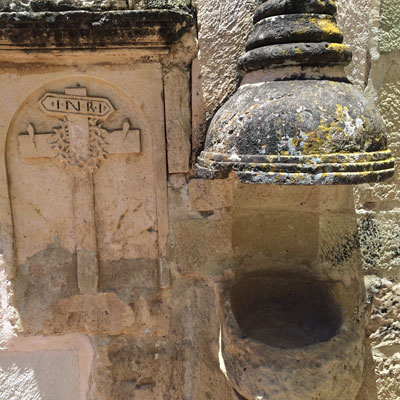
Holy Water Font
The conventional monastery church was never finished. Today there is a parish church that is still used. It has been roofed but not using the original Dominical corbels and vaults.
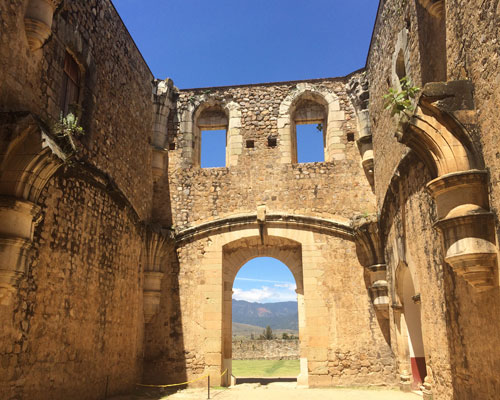
Unfinished Monastery Church
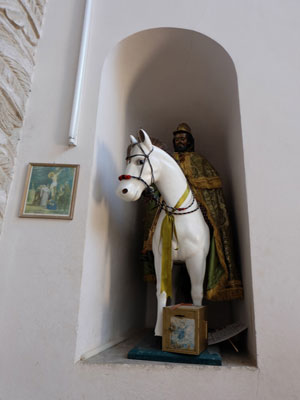
Nook Statue of Saint James Apostle inside Parish Church
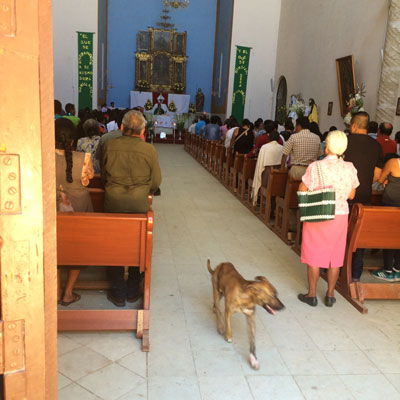
Parish church with mass being celebrated
According to legend, Donaji is buried at the front of the church to the right of the altar.
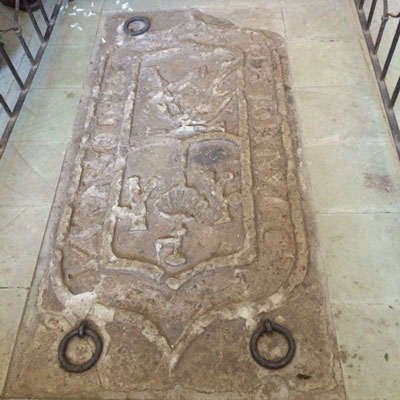
Donaji burial site
There are many interesting features both inside and outside the monastery compound. There is an intricately carved baptismal font in the open courtyard inside.
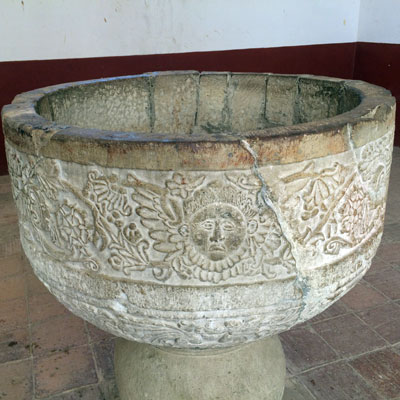
Original murals remain at all four corners of the courtyard. One of the murals, the Christ Mural, may depict Donaji standing on the right side.
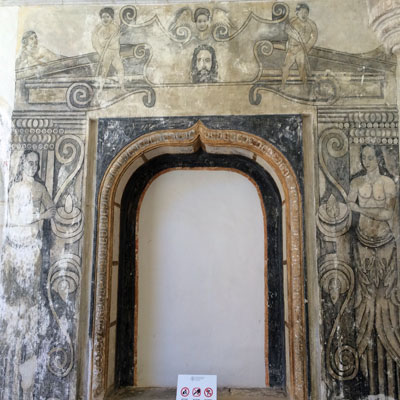
Christ Mural
There are significant murals depicting the monks inside the monastery. Though faded, they are still visible after nearly 500 years.
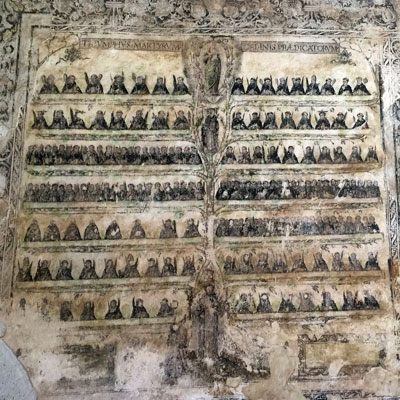
The Tree of Martyrs depicting the monks residing at the monastery. Each row depicts one year.
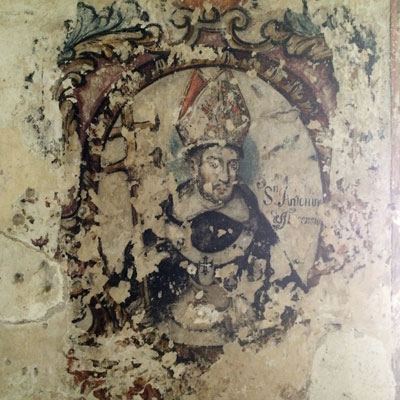
One of the Abbots presiding over the monastery
The carved stone relief at the very front of the monastery is exquisite.
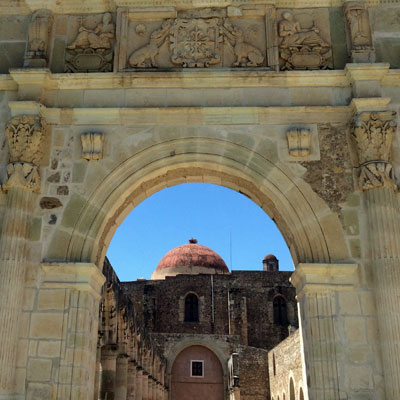
Stone Carved Relief at Front of Monastery
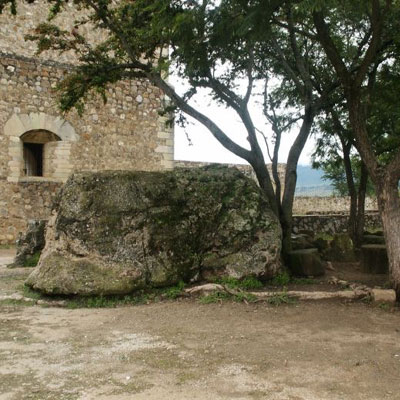
View Entering Church
The Princess Donaji is so popular that she is on the official seal of the city of Oaxaca. Every year at the famous Guelaguetza dance festival in Oaxaca, the story of Donaji is reenacted by dancers on stage at the open-air amphitheater built into the Cerro del Fortin, a hill that overlooks Oaxaca City. There are several versions of the performance available online including the one from this year (2016) HERE.
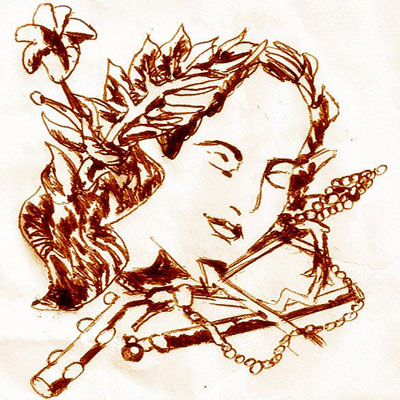
Official Seal of Oaxaca
Her likeness can be found throughout the city including at the top of the historic Macedonio Alcala Theater, a popular local venue for musical events.

Macedonio Alcala Theatre Front Relief
There have been cocktails created in her honor. At the Rivera restaurant in Los Angeles, the cocktail list features the Donaji which is made with artisanal Oaxacan mezcal and house-made grasshopper salt.

Donaji Cocktail
There is a restaurant Donaji in Mitla.

Restaurante Donaji Mitla
Even Malcolm Lowry found a way to put Donaji in his famous novel Under the Volcano.
Si quiere hacer buen pan exija las harinas “Princesa Donaji”.
I would be remiss if I didn’t tell you about an entirely different version of the legend. Rather than retell the story in my own words, I will copy below this rendition published on page 8 of the February 2012 Huatulco Eye by Frances Lopez, 11 years old at the time.

Once upon a time in the beautiful hills of Oaxaca, hidden in the lush forest was the palace of the great Zapotec king. His daughter, princess Donaji went every morning to stroll through the forest and listen to the birds with the extraordinary feathers sing. One day she discovered a stream that soon became a river and as she walked along the river she saw a silver sheet of water cascading over a beautiful rock. Today this rock is known as Guela Bupu. Every morning thereafter Princess Donaji would go to a cave that was hidden behind the waterfall to bathe.
Some days she would keep on walking beyond her wondrous waterfall to seek more, one day she went so far she became very tired. She decided to rest at the foot of a green, mossy tree and fell into a deep sleep. While she was sleeping, she was discovered byu a Castillian captain who silently watched and admired her. When she awoke she was startled by the white man and she set off running back into the palace. The next day she went out for her stroll to her waterfall, Guela Bupu. Upon her return she came across the white stranger again.
“Yesterday beautiful stranger when I saw you I could hardly believe you were real. I have travelled across the ocean to seek new lands. But when I saw you I knew my higher purpose.” And he knelt before her.
Princess Donaji hjad no idea what he was saying. But she enjoyed the sweet sound of his voice and the smile he wore was universal.
“Dius, Hello” Responded Princess Donaji as sjhe knelt down beside him. They bothj laughed. “Padelii? Where are you from?” she persisted in Zapotec. The handsome visitor understood nothing but there was a kindness in her eyes. They spent the day walking and swimming near Guela Bupu, communicating with hand gestires and smiles.
By the end of he day when the moon was starting to rise, despite their differences in language, the friendliness and the admiration between them showed love.
When Donaji returned to the palace and shared her extraordinary adventure with her parents, the King and Queen forbid her from seeing the man again. Princess Donaji begged her parents to let her marry him but the permission was not granted. They had already arranged a marriage with a dark brave warrior, well known to his people. Princess Donaji swore that she would die before marrying anyone but the white man that she loved so dearly.
Filled with tears of sadness Princess Donaji walked to her stream, to her waterfall, to the beautiful Guela Bupu. She climbed a peak, threw herself off the rocks and fell rapidly towards her death.
Legend now has it that you can sometimes see a golden goblet floating in Guela Bupu. It is said to contain Donaji’s heart which has become a symbol of a brave and loving Zapotec heart.
